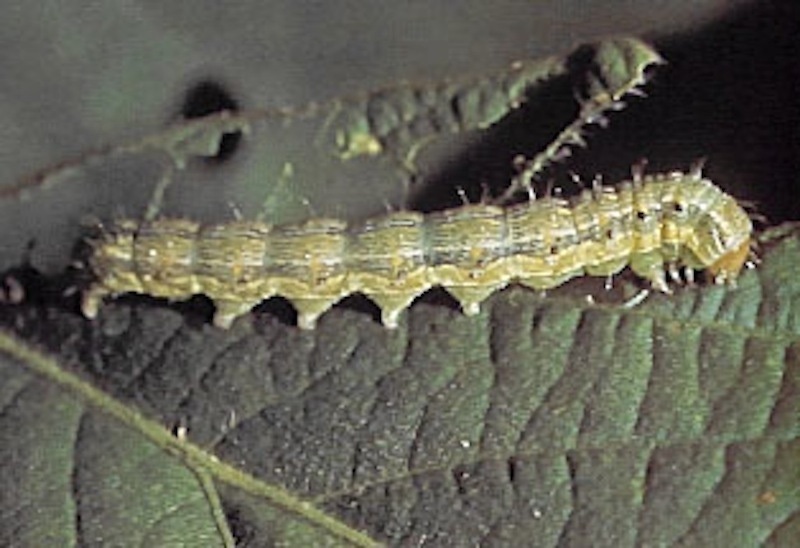
While kudzu bugs aren’t an issue year, corn earworms and tobacco budworms are causing problems for soybean farmers. These pests will have to be managed, along with defoliators like soybean loopers and armyworms.Stink bugs continue to frustrate farmers in North Carolina. Stink bug damage varies widely across the state, but the pests are generally at much higher levels than seen in the past few years.

North Carolina State University Extension Entomologist Dominic Reisig says this year is shaping up to be one of the worst years ever for plant bugs in the state with heavier infestations of stink bugs, tobacco budworms and corn earworms being found in more fields.
“I’ve been here for five years and it’s been as bad as I’ve ever seen. It’s probably as bad as we’ve seen for 30 years or longer,” Reisig says. “I expect plant bugs are a trend that’s here to stay so farmers are going to need to remain ever-vigilant in their scouting.”
The insect infestations appear to be hitting the northeastern part of North Carolina the hardest. “Where you have bugs, they are really bad, but where you don’t have them, you often don’t have them at all,” Resisig says.
Interestingly, one North Carolina pest that hasn’t proven to be as much of a problem this year as in years past is kudzu bugs in soybeans. “I have been slow to join the bandwagon but am now on board. I think the cold winter has knocked our populations back,” Reisig writes in a blog post.
Spots where kudzu bugs are appearing are in traditional “hot spots” where they have overwintered, according to Reisig. “Because of this, I think our greatest chance for kudzu bug infestations are going to be localized around these traditional hot spots. You probably shouldn’t expect kudzu bugs to show up at threshold levels in new spots this year,” Reisig says.
Kudzu migration has been “really wimpy” this year compared to previous years with populations likely 10 to 20 times lower than last year according to Reisig.
While kudzu bugs aren’t an issue year, corn earworms and tobacco budworms are causing problems for soybean farmers. Reisig says these pests will have to be managed, along with defoliators like soybean loopers and armyworms.
Stink bugs continue to frustrate farmers in North Carolina. Stink bug damage varies widely across the state, but Reisig says the pests are generally at much higher levels than seen in the past few years.
In cotton, farmers should scout for stink bugs by splitting and examining the inside walls of 1-inch diameter bolls for warts and/or stained lint. Reisig advises farmers to observe the 10-percent injured boll threshold level during weeks three to five of the bloom period.
“If present in moderate to high levels, stink bug injury can result in significant yield losses,” Reisig writes in his blog. “In making spray/no-spray decisions, remember that the cost of the treatment and insecticide typically translates into the value of 10 to 12 pounds of lint. Insecticides targeted for stink bug generally do a good job with plant bugs.”
Meanwhile, defoliators like soybean loopers and armyworms are more of a problem later on in the season. In his blog, Reisig explains they are migratory pests that don’t overwinter here, and their populations can build as the season progresses. Additionally, at midseason, soybean farmers will often use a pyrethroid to manage pests such as earworms and stink bugs.
Reisig says a disadvantage of using pyrethroids at midseason is that the treatment will “knock out all the beneficial good-guy insects, releasing worms to eat foliage.” He advises farmers to only treat for defoliators when the canopy loss is 15 percent after bloom. “For soybean looper, beet armyworm, and corn-strain fall armyworm, use a worm-specific insecticide,” he says.
The good news, the entomologist says, is that most farmers who have plant bugs are on top of the situation and are managing accordingly. “Managing plant bugs is as easy as managing any of our other pests if you have a scouting plan and stick to it,” Reisig says.
About the Author(s)
You May Also Like





